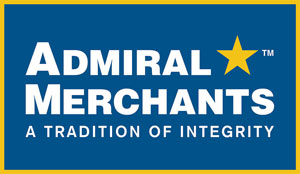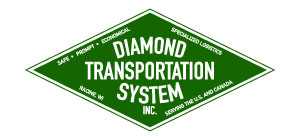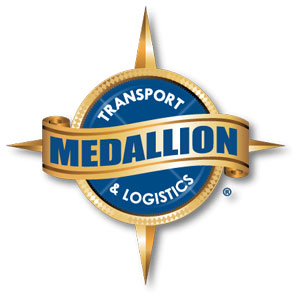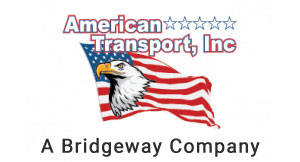Avoiding Penalties and Delays with Indiana Oversize Permits
Indiana laws clearly define rules and regulations related to the dimensions allowed for trucks transporting goods. It’s critical to be aware of the requirements for oversize permits to avoid delays and penalties that can hurt your bottom line and make it harder for you to reliably run your business. Keeping up with the different state regulations can be challenging, but here, you’ll get a concise rundown of what to expect when transporting in Indiana.
Why Are Oversize Permits Required?
The Indiana Department of Transportation strives to keep the roads safe for everyone, which means they must regulate the size of large objects being transported to ensure the utmost care is taken so that roads can continue to run smoothly. Overhanging, oversized, or overweight objects require special care to guarantee they are safely transported, including permits, red flags, and other signals.
If you don’t follow permitting requirements, you endanger yourself and others. Accidents can result when these laws aren’t followed, such as rear-end accidents, balance shifts that cause the driver to lose control, vehicle rollover, losing cargo, and jackknifing. Permits protect the roads and allow truckers to more easily transport their cargo with additional peace of mind.
Indiana Oversize Permitting System
Permits are required when a vehicle exceeds the following parameters:
- 8 feet 6 inches wide
- 13 feet 6 inches high
- 53 feet in length
- 80,000 pounds gross vehicle weight
Some exceptions include:
- Vehicles that are part of highway construction and are working on roads, highways, or parts of roads or highways that are not open to the public at the present time.
- Construction equipment or machinery used for highway maintenance or construction.
- Agricultural implements that are used for farming so that farmers can move them without damaging highways.
- Width or height of a farm vehicle with some product from the farm.
- Firefighting tools owned and used by firehouses or political subdivisions.
- Disabled vehicle that does not go more than 50 highway miles and is moved by a registered recovery vehicle.
When in doubt about the rules or exceptions, contacting Indiana’s Motor Carrier Services can answer any questions.
Extra wide or heavy loads may need a police escort to get a permit. For example, one escort will be required for loads more than 110 feet long, and for loads exceeding 130 feet, a front and a rear police escort is required. For width, one escort correlates to 12’4″, over 14′ 4′ requires one escort on dual lane highways and two on other roads, and for loads with widths greater than 17′ front and back police escorts are needed. For height, over 14’6″ requires an escort with a pole. For heights more than 15′, a utility bucket truck is needed unless you are on the interstate. Finally, over 200,000 pounds of weight will need two escorts.
How Indiana Truck Permits Work
Indiana oversize permits couldn’t be much easier to obtain. You can apply for the permits 24/7 through the Indiana Department of Revenue’s Motor Carrier Service. This service makes it easier to get permits and includes tools for routing and paying for permits. Some permits will be approved automatically, while others may undergo a manual process. Permits are usually approved within one business day, but some factors can extend the process’s length. Ensure you have all documentation ready and have entered your information accurately to avoid delays.
Once a permit has been approved, that permit will be valid for fifteen days, so be sure to plan accordingly based on your expected transport day. It’s better to get the permit as soon as possible to guarantee that you’ll still get it in time, even if there are delays. You’ll also want to remember that travel is restricted on major holidays and during holiday weekends.
You can also get an annual toll road gate permit through the online service portal, which allows you to choose the gate numbers you need and pay for that permit for an entire year. Each truck will need just one permit, and several gates can be listed on that single permit.
Red Flag Requirements
If your oversized load goes past the rear by four feet or more, you need to have a red flag or light in the back of the vehicle visible at least 500 feet from the back and sides. Any overlength or overwide load should have a flag to help keep other drivers aware and prevent accidents.
What Happens if You Don’t Follow Regulations?
Not following Indiana’s system can result in criminal charges for failing to follow road rules and putting other people in danger. You may end up with thousands of dollars in fines and even months in jail for not following regulations. While criminal penalties are possible, civil penalties are also possible, and some of these penalties come with a penalty of up to $10,000.
Additionally, if there is an accident and you don’t have the proper permits and signals, you may be liable for the damages that result from the accident. These liabilities can come with huge costs and a big legal headache. Trucks transporting goods have a huge chance of doing a lot of damage when they are in an accident, which means that these accidents often have larger damages, which you’ll want to avoid at all costs by being aware of necessary regulations.
Osage Specialized Transport Can Help
Osage Specialized Transport wants to connect you with the right carriers to transport your equipment without issues. Our company has been working since 1995 to help businesses move goods, products, and equipment. With a specialty in the energy sector, we have taken on big projects and have proved our expertise to customers. Our brokerage uses our existing industry connections to get you the most efficient and reliable trucking services. Throughout the process, we help you coordinate the transport and avoid issues that may arise. Contact us today to learn more about our process and get an estimate.















